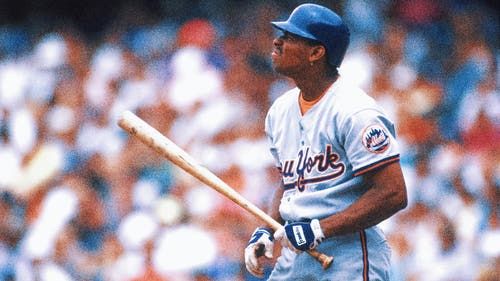
Can Jon Garland make a comeback?
His last outing convinced him. Something was terribly wrong.
History shows that on June 1, 2011, right-hander Jon Garland produced a quality start for the Los Angeles Dodgers against the Colorado Rockies. But almost immediately after leaving the mound, reality struck.
“I ended up going inside and saying, ‘Look, I can’t do this to myself. I can’t do this to this team,’ ” Garland recalled Sunday night. “When I was on the field, I was starting to anticipate the pain. If you’re anticipating the pain, your mind is not even there.”
Garland needed shoulder surgery, the worst kind of surgery for a pitcher, surgery that sidelined him for the rest of 2011 and all of 2012.
But now, more than 20 months later, he is on the verge of completing a minor-league contract with the Seattle Mariners — and maybe regaining his place in the game.
Pitchers and catchers report this week to Florida and Arizona, all with their own stories, their own hopes. We will talk about prospects such as Texas Rangers infielder Jurickson Profar and St. Louis Cardinals outfielder Oscar Taveras. We will talk about comebacks such as those by New York Yankees closer Mariano Rivera and shortstop Derek Jeter. And we will talk about guys like Garland, guys we thought had disappeared.
From 2002 to '10, Garland averaged 205 innings, made an All-Star team, helped the Chicago White Sox win a World Series. But I had all but forgotten about him when a scout texted me the other day and said, “I think Seattle might catch something with Garland.”
The scout recently had seen Garland throw in an audition for major league clubs. I asked him if Garland, at age 33, finally was healthy.
“Looked it to me,” the scout said. “Looked good, honestly.”
Garland feels good, too, unlike a year ago at this time, when he agreed to a minor league deal with the Cleveland Indians, but couldn’t bring himself to take his physical.
Indians GM Chris Antonetti recalled Garland saying that he needed more time to recover, that he didn’t want to take the team’s money if he wasn’t ready to compete.
“Very classy,” Antonetti said of Garland’s decision.
And quite necessary, according to Garland.
“I got on the mound a couple of times before that spring training,” he said. “And each time I got on the mound, I was going backwards.
“I got out of the shower one night and I was just looking in the mirror. I said, ‘You know what? I can’t go to spring with this team and take their eyes off young guys that have a chance to make this team. I can’t take a spot just because of my name, what I’ve done in the game, who I was, what I’ve accomplished.
“I honestly think that might have been the best decision of my career.”
Garland said he took a month off after spring training started, resumed his physical therapy, decided in June that he wouldn’t pitch at all in 2012.
For the entire year, he was not part of any team. He was alone, working out at his home outside of Los Angeles.
To those who know him, his determination was not exactly a surprise.
“He’s really tough,” said the Chicago Cubs’ Jed Hoyer, who had Garland in 2010 with the San Diego Padres. “He was hurt the last two months of that season and kept taking the ball.”
The Los Angeles Dodgers’ Ned Colletti, who acquired Garland twice, offered similar praise, saying, “He loved to pitch, loved to compete.”
Still, competing on the mound is one thing. Fighting to salvage one’s career without any support system is another.
Garland’s surgery was on July 11, 2011. Dr. Neal ElAttrache had cleaned up the pitcher’s labrum, bursa and rotator cuff, and also reinforced his rotator cuff. Garland initially went to a rehab center favored by the Dodgers, then one at the Kerlan-Jobe Center, where ElAttrache is based.
In 2012, he was on his own — and actually preferred it that way.
“I’m kind of at ease when I’m by myself, kind of in my own element,” Garland said. “I like that. I like that serenity.
“I built a gym in my backyard. Luckily baseball has blessed me with opportunity to do that,” added Garland, who has earned $51.5 million in his career, according to baseball-reference.com.
“I would just go out there. I’d be out there for a couple of hours a day. I would put my music on. There really wouldn’t be anybody to bother me. I found that I would tend to do more work.”
Slowly, everything came back.
“I was home in late July,” Garland said. “I had never really paid attention when I heard other guys talk about, ‘Feeling normal.’ But I woke up one day and realized throughout the day that my shoulder felt normal.
“I thought it did just because there wasn’t the pain. But it almost just clicked. It felt exactly how it should feel — eating, sleeping, walking around. Normal activities. It felt normal.”
He kept at it, kept working, kept pushing. Now, a year removed from his deal that never happened with Cleveland, Garland said the difference in his shoulder is “night and day.” He said that for the past three weeks, he has been throwing off a mound two days a week, throwing 50 pitches — all of his pitches — in his session last Tuesday.
Mariners officials will not discuss Garland until his signing is official, but they saw the same thing as everything else: Garland looked healthy. The ball came out of his hand easily.
This time, Garland will not back out on his physical. On Monday, he will report to the Mariners’ camp in Peoria, Ariz., ready to revive his career.
He’s excited.
He thinks he can be the old Jon Garland.
“Absolutely,” he said. “There’s no question in my mind.”










